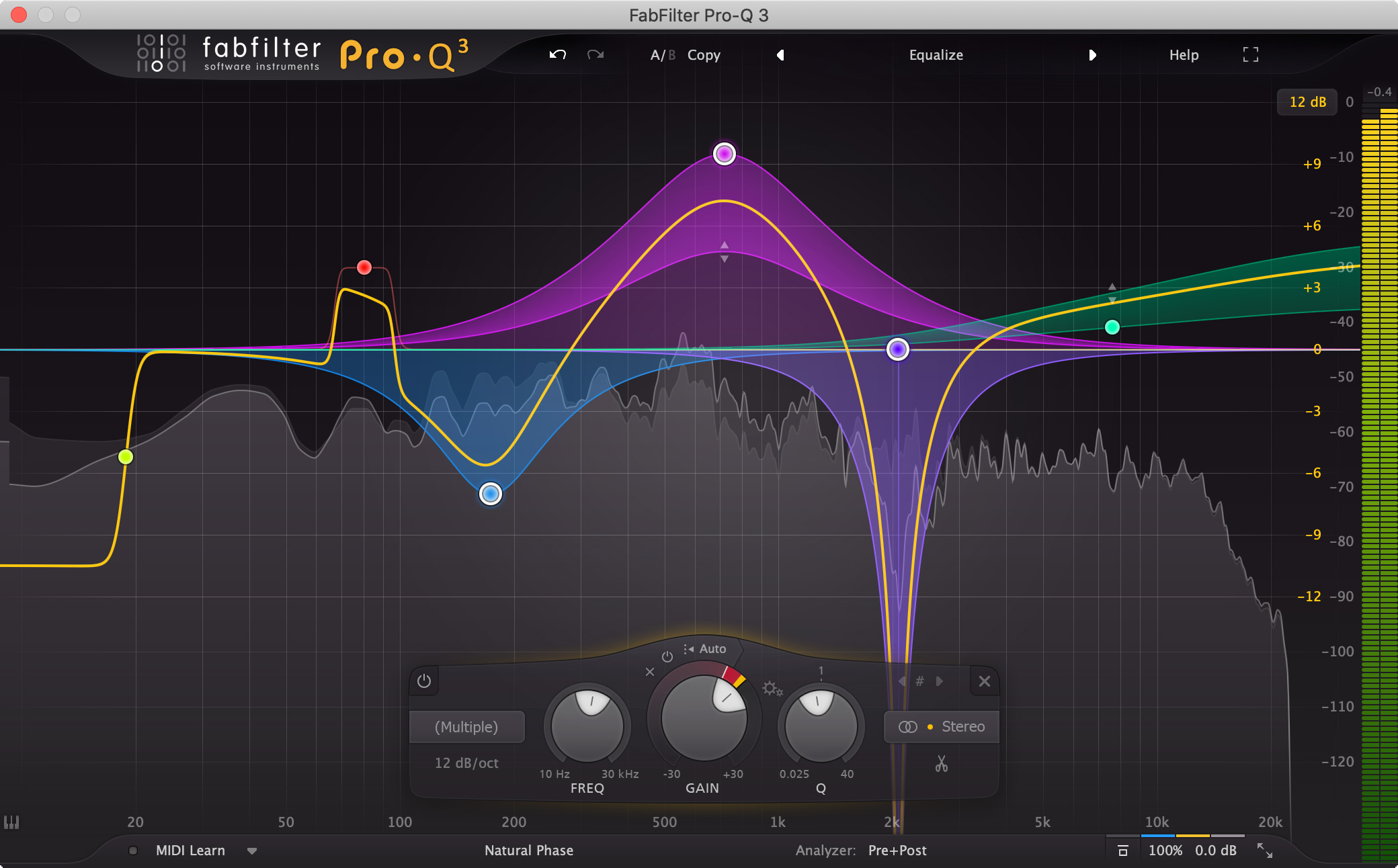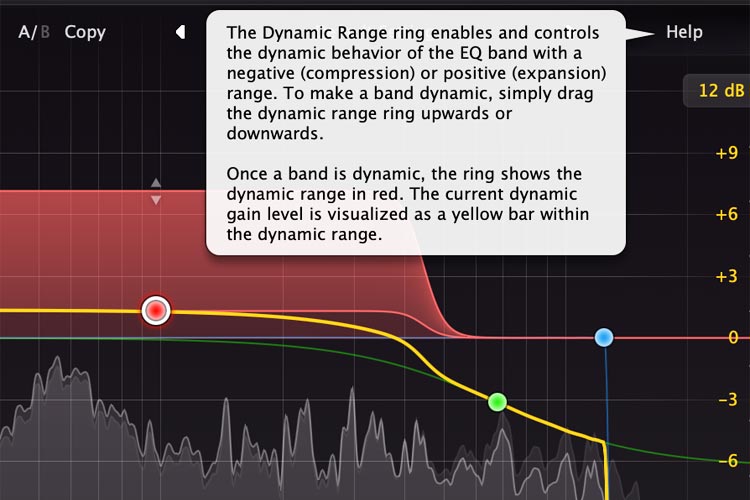
I understand you're not disputing what they hear/preferences but would you be able to somehow describe the differences between the modes seeing as fabfilter doesn't do a good job? I was planning on testing it out more tonight but I also see all of the other comments on my post vouching for natural phase mode and how it made things slightly sound better. Would the correct thing to assume in this case then be that no matter what mode you use, there will still be something that passes through? It's just that each mode deals with it in a different way to edit the sound differently?
Fabfilter pro q 3 manual pro#
I high passed a vocal at 196hz & flipping back & forth between both modes there's still some frequencies passing through around starting around 120hz when I open up a second Pro Q 2.

I even just checked right now with both modes. I've noticed the first part ( about frequencies passing through) on tracks I've mixed before. I would also be shocked if Natural Phase is audibly different from Zero Latency at anything below 10kHz. I usually only go to Linear Phase if mastering a track that's already heavily saturated/distorted, and Zero Latency sounds like it's smearing the signal or sacrificing headroom. If I'm dealing w/ high frequencies I might sometimes try Natural Phase and see if it works better. On my end, I use Zero Latency most of the time.
Fabfilter pro q 3 manual manual#
The manual literally says Pro Q 2' s "unique Natural Phase mode performs even better.Īnd, most people don't have sufficient monitoring to be able to really tell the difference. He says if you used natural phase or linear phase instead of zero latency this wouldn't be the case.Īnd this- FabFilter make incredible tools, but they routinely have poor/misleading explanations for certain settings: He points out how on the second Pro Q 3 you can still see frequencies on the graph below 100hz, even though he "cut them out" on the first one. This, for example, is categorically false, and easy to test and see for yourself: Your resulting confusion is then compounded by the likely silliness of most other things you've read on the topic. I'm not disputing what he's *hearing*, not disputing his *preferences*, but the explanation is not right. Use linear phase mode only for certain things.Įither you are misunderstanding his explanation, or his explanation is wrong. switch to zero latency mode if problems arise. Tldr what processing mode do you use and for what? zero latency, linear phase, natural phase, all 3? and why? I haven't tested it out yet but so far from what I've learned in the past few hours, it seems that natural phase should be the mode that is mostly used. mastering isn't mixing together multiple copies with different eqing, it's literally the whole mix. I heard linear phase was good for certain aspects of mastering but also read as a general rule of thumb only use linear phase if you're going to mix together multiple copies of the same sound with different EQing. I think I would rather listen to those with proven results. People complain about the pre-ring, say the bass isn't hitting as hard, I honestly have never even played around with them and always have left it on Zero Latency but after hearing a very successful engineer, one of the most popular hip hop producers atm, and the plugin's manual say the other modes work better. So it delivers the most accurate frequency response and best sound quality, even at the lowest frequencies and highest Q settings, without introducing noticeable pre-ring or long latency! "Īfter reading this, I thought it was obvious I should switch, but I wanted to learn a bit more & I constantly see people saying they recommend to just use the Zero Latency mode most of the time. The manual literally says Pro Q 2' s "unique Natural Phase mode performs even better It not only perfectly matches magnitude response of analog EQ'ing, but also closely matches the analog phase response. I did some research and even read some of the Pro Q 2 manual (i don't have 3 ). He says if you used natural phase or linear phase instead of zero latency this wouldn't be the case. In this case, the intention was to cut out everything below 100hz. The way he explained it was by keeping Pro Q 3 on zero latency and adding a highpass filter to an effect.


He then says that he was working with Mixed By Ali one day, and Ali said that he used to always leave it on Zero Latency mode, but once he switched it to either Natural, or Linear Phase, everything sounded 10% - 15% better. I was watching a recording of KennyBeat's first twitch live stream & at one point he mentions that when using pro q 3, he used to leave it on Zero Latency mode.

There's a tldr at the bottom for those who don't wish to read.


 0 kommentar(er)
0 kommentar(er)
